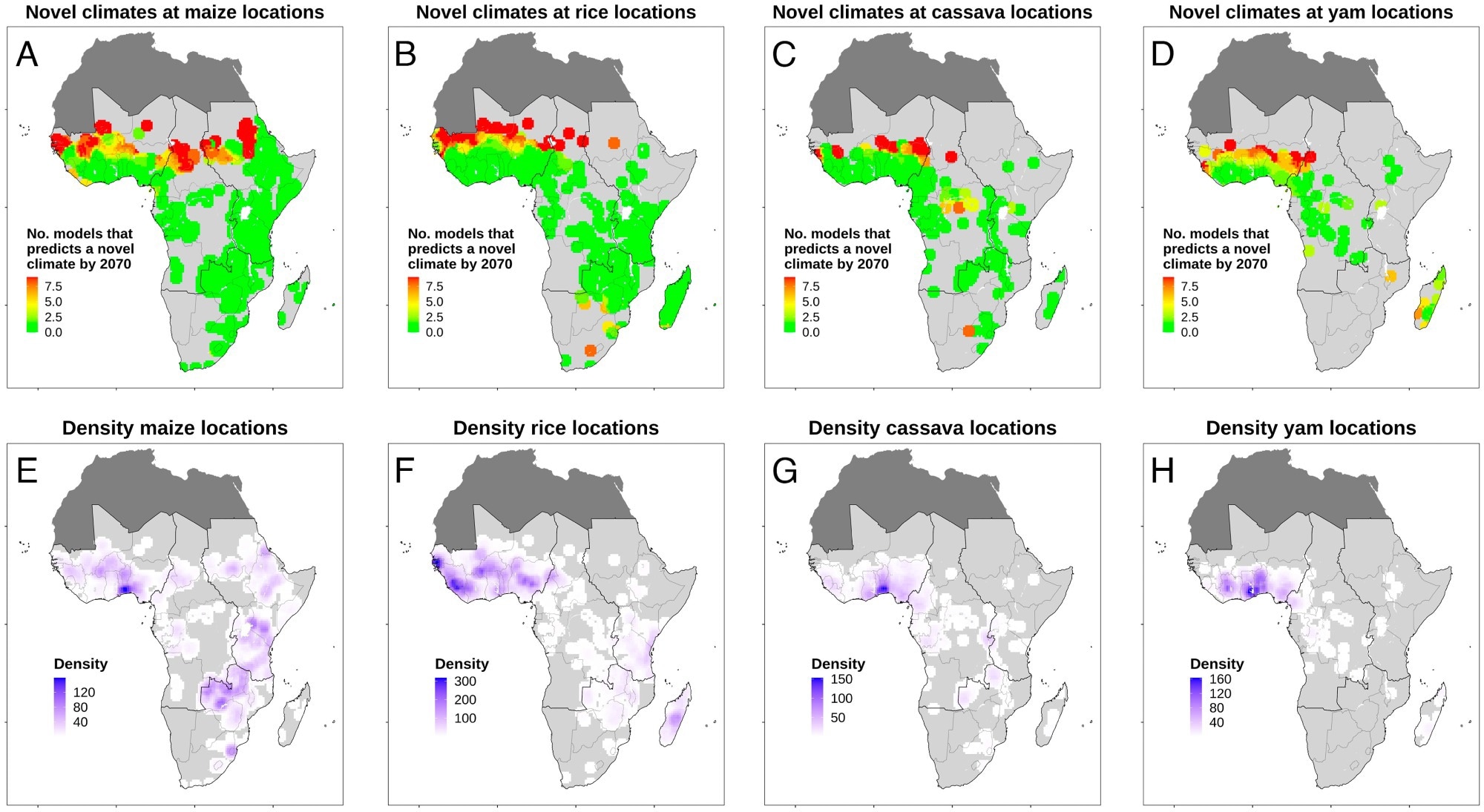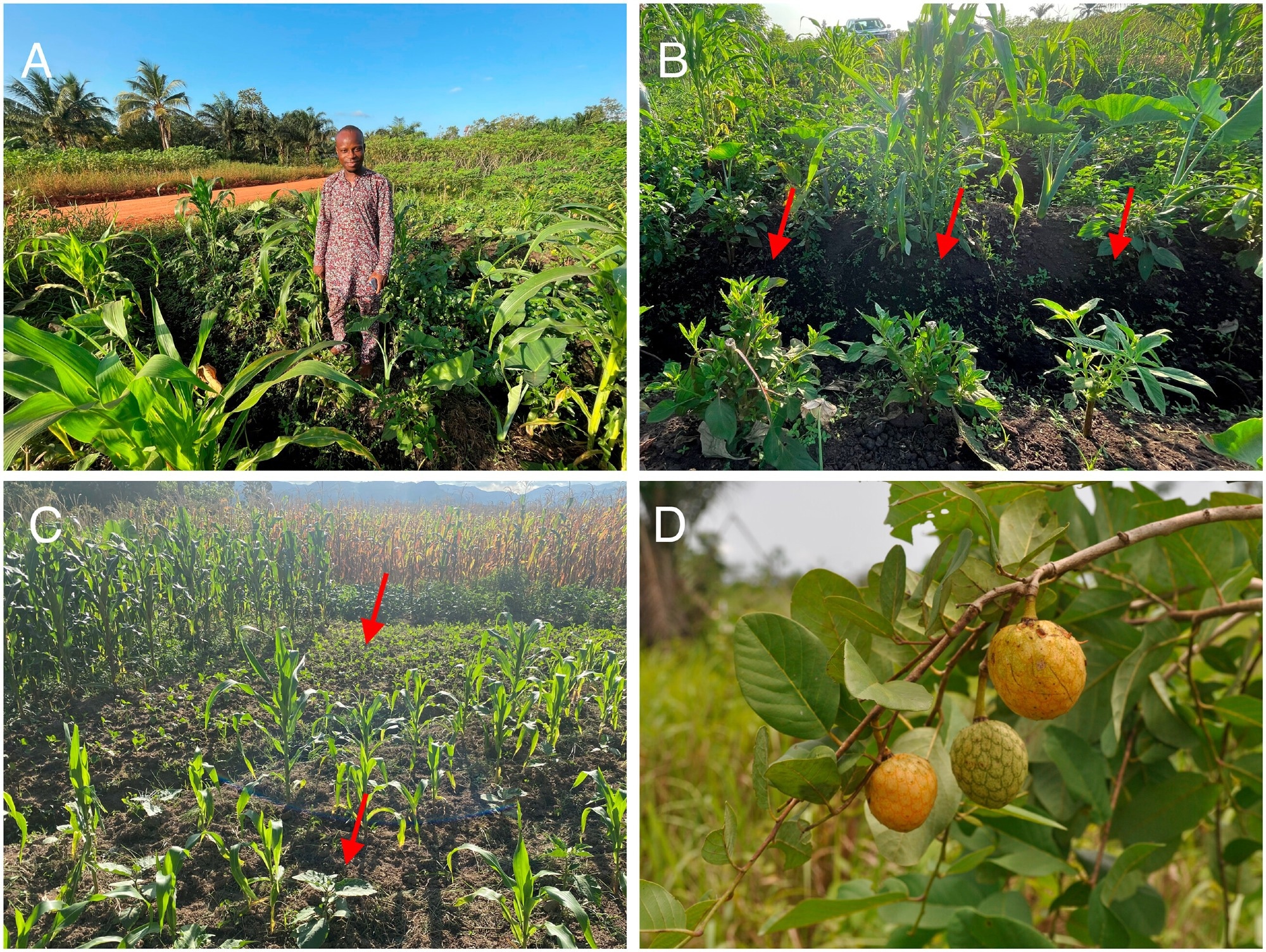Scientists have identified several forgotten food crops in sub-Saharan Africa that can be incorporated into the cropping system to support climate resilience and nutrition in the region. The study has been published in the journal PNAS.
Due to extreme climate change, Sub-Saharan Africa faces a significant challenge in achieving zero hunger. The region is already facing challenges in increasing the production of quality foods to provide healthy diets for a fast-growing population.
A change from the regional dominance of one crop to the regional production of several crops is defined as crop diversification, which is vital for maintaining the balance between food demand and supply under climate change.
Several traditional African plants that have gradually changed over centuries with human food systems can support crop diversification in sub-Saharan Africa to produce healthy foods and support zero hunger policies. However, the mainstream cropping systems have mostly neglected these plants because of an inclination toward Western food and a massive change in land use in recent decades.
In the current study, scientists have identified several “forgotten” (neglected) food crops of sub-Saharan Africa and determined their ability to adapt the cropping systems of major staples of the region under changing climate.
The scientists hypothesized that if a candidate forgotten food crop can maintain its growth in a location along with current major staples under projected climatic conditions in 2070, it may diversify the production of staples to support future climate adaptability.
They have further hypothesized that if a candidate forgotten food crop can grow in a location under 2070 climatic conditions where current stables may no longer grow, it can help replace the major crops and design new cropping systems.
 Heat maps showing novel climates by the year 2070 under emission scenario SSP5-8.5 predicted with concave hull modeling for the present production locations of the four major staples of maize, rice, cassava, and yams. Panels A and E refer to maize; panels B and F refer to rice; panels C and G refer to cassava; and panels D and H refer to yams. Panels A to D show the level of consensus among nine General Circulation Models used in the modeling. Panels E to H show the density of major staples’ present location data used in the modeling. For further information on analysis. Thicker outlines on maps reveal the four subregions of the African Union that were considered separately in our analyses: West, Central, East (including Madagascar), and Southern Africa. For heat maps showing predicted novel climates by 2070 under emission scenario SSP2-4.5
Heat maps showing novel climates by the year 2070 under emission scenario SSP5-8.5 predicted with concave hull modeling for the present production locations of the four major staples of maize, rice, cassava, and yams. Panels A and E refer to maize; panels B and F refer to rice; panels C and G refer to cassava; and panels D and H refer to yams. Panels A to D show the level of consensus among nine General Circulation Models used in the modeling. Panels E to H show the density of major staples’ present location data used in the modeling. For further information on analysis. Thicker outlines on maps reveal the four subregions of the African Union that were considered separately in our analyses: West, Central, East (including Madagascar), and Southern Africa. For heat maps showing predicted novel climates by 2070 under emission scenario SSP2-4.5
Climate prediction at locations of major staple production
The climate change modeling for 2070 at locations still suitable for staple production revealed the highest decline in climate in West Africa, followed by Central Africa. In contrast, the lowest decline was predicted for Southern Africa and East Africa.
The most prominent climate change was predicted at locations of maize and yam production. This indicates an urgent need for diversification or replacement of these two staples. In contrast, a minimal climate change was predicted for locations currently suitable for cassava and rice production.
Forgotten food crops and their ability to diversity or replace major staples
The study model identified East Africa and Southern Africa as the sub-regions with the highest potential for a total of 138 candidate forgotten crops to diversify or replace four major staples (maize, rice, cassava, and yam) in 2070.
 Examples of diversified cropping systems in sub-Saharan Africa that include forgotten food crops. Panel A: A Beninese farmer stands in his diversified farm field that includes Colocasia esculenta (taroyam), maize, Amaranthus spp. (amaranth), and Celosia argentea (celosia) within an agricultural landscape dominated by cassava. Panel B: Three different amaranth varieties in the forefront of the picture (arrowed) are being evaluated by the same farmer as part of a participatory variety evaluation experiment in Benin; Panel C: Maize cropping system diversified with leafy and fruit vegetables in Eswatini. In the front of the picture, maize is intercropped with Solanum aethiopicum (African eggplant, arrowed). At the back of the picture, amaranth has been sown between maize fields (arrowed). Panel D: The fruit crop Annona senegalensis (wild custard apple) is widely used in Benin. Photo credits: Sognigbé N’Danikou, World Vegetable Center (panels A and B); Maarten van Zonneveld, World Vegetable Center (panel C); Enoch G. Achigan-Dako, University of Abomey-Calavi (panel D)
Examples of diversified cropping systems in sub-Saharan Africa that include forgotten food crops. Panel A: A Beninese farmer stands in his diversified farm field that includes Colocasia esculenta (taroyam), maize, Amaranthus spp. (amaranth), and Celosia argentea (celosia) within an agricultural landscape dominated by cassava. Panel B: Three different amaranth varieties in the forefront of the picture (arrowed) are being evaluated by the same farmer as part of a participatory variety evaluation experiment in Benin; Panel C: Maize cropping system diversified with leafy and fruit vegetables in Eswatini. In the front of the picture, maize is intercropped with Solanum aethiopicum (African eggplant, arrowed). At the back of the picture, amaranth has been sown between maize fields (arrowed). Panel D: The fruit crop Annona senegalensis (wild custard apple) is widely used in Benin. Photo credits: Sognigbé N’Danikou, World Vegetable Center (panels A and B); Maarten van Zonneveld, World Vegetable Center (panel C); Enoch G. Achigan-Dako, University of Abomey-Calavi (panel D)
Considering still-suitable and future climate conditions at production locations of major staples, a higher coverage by candidate crops was observed for still-suitable climates compared to that for future climates.
Overall, these findings indicate that forgotten food crops can provide vital opportunities for diversification or replacement of current-day major staples, which is needed to develop novel cropping systems suitable for future climate conditions.
The placement of each candidate crop into specific food groups revealed that the fruit group has the maximum number (n=60) of candidate crops, followed by the leafy vegetable food group. A minimal number of crops were identified in the roots and tubers group (n-7).
The study further identified a panel of 58 forgotten food crops from all the food groups and found that these crops have the highest coverage for still-suitable and future climates at production locations of major staples.
These prioritized crops included a large number of leafy vegetables and fruits, which are good sources of vitamins and minerals. In addition, cereals and pulses were also present in the panel, which are good sources of protein, energy, and micronutrients, and, thus, could be used for crop diversification and replacement.
Overall, the findings indicate that these prioritized forgotten food crops can be used to support the production of more climate-resilient and nutrient-enriched foods in sub-Saharan Africa.
As stated by the scientists, “our analysis, contextualized by subregions within sub-Saharan Africa as a whole, informs practitioners, researchers, and policymakers on the use of Africa’s forgotten food crops in the diversification of food supply for healthy diets in a changing climate.”